29 May 2014
A new diamictite exposure (Devonian?) along Corridor H
Posted by Callan Bentley
While on Corridor H last week with Team “Border to Beltway” (and USGS research geologist Dan Doctor), we stopped at the putative mass transport deposit. We still haven’t figured out which unit this is (It’s not the Foreknobs), but as we approached it, Dan wondered aloud, “I wonder where the top of the Devonian is. Maybe we could find some of Dave Brezinski’s glacial deposits.”
If you’re not aware of this notion, it’s that there are widespread glaciogenic sediments (diamictites and dropstones) throughout the greater Appalachian basin. They are late Devonian in age, a time when there was glaciation in Gondwana, and a global mass extinction usually blamed on global cooling.
I discuss this notion on my Sideling Hill field trip, since there are decent diamictite outcrops exposed on the far western side of the mountain. One of the “Border to Beltway” participants had also been on the Sideling Hill trip this past spring, and it was she who walked up to me and asked, “I have something I’d like you to take a look at. Is this a diamictite?”
Lower (physically and stratigraphically) in the same outcrop, she had indeed found a gorgeous diamictite:
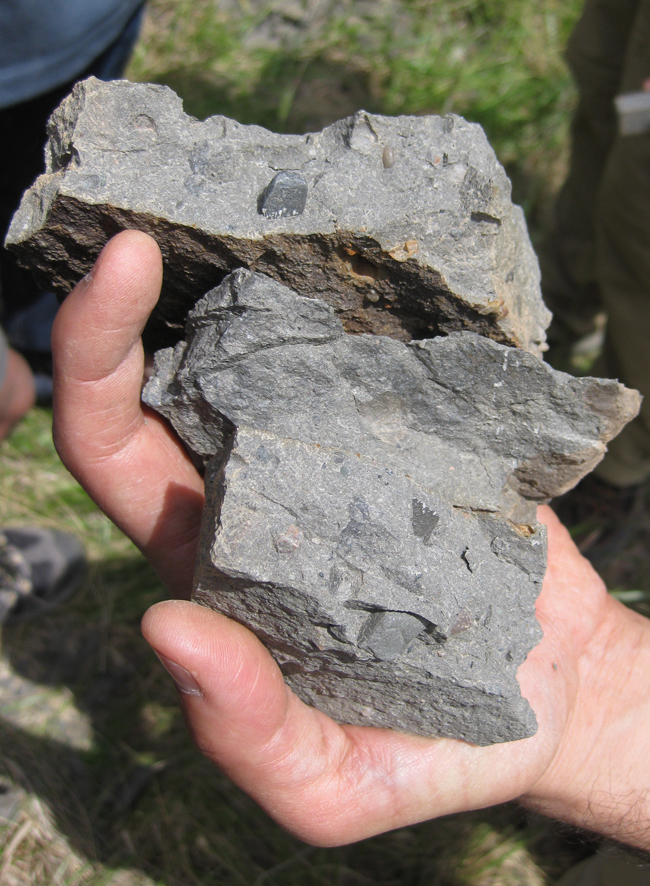
Internally, the matrix of this poorly-sorted sedimentary rock was massive. The “outsized” clasts were a variety of shapes, sizes, and lithologies.
This made me so happy – to have taught a student a concept in one context, and then to have her spontaneously and accurately and totally unprompted by me apply it in a new context. She had learned, and she had learned well!
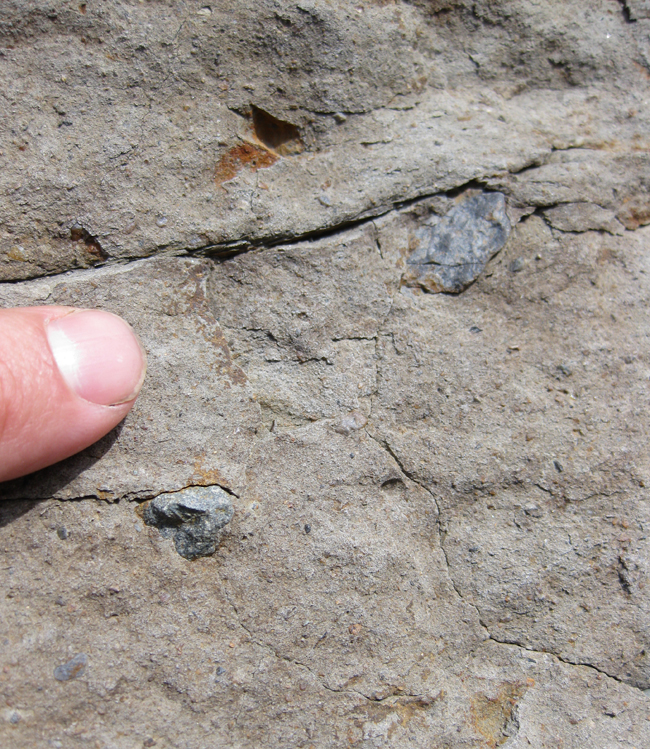
Boy, I got excited over this new exposure… Check out some of its most outstanding clasts…
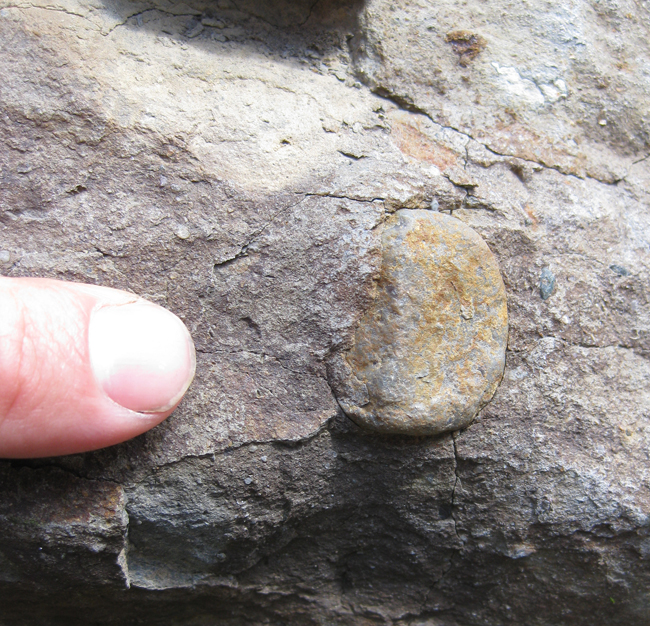
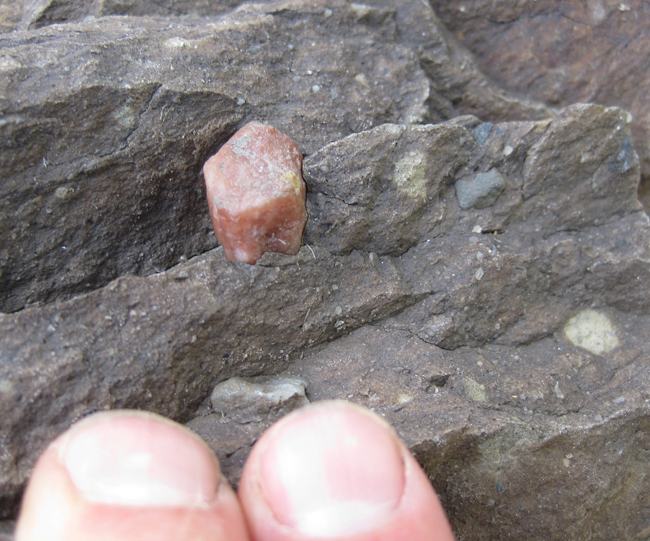
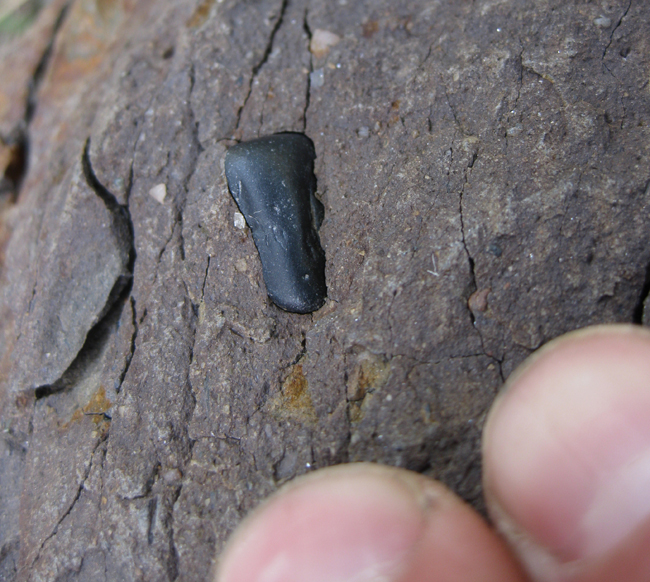
We removed some clasts for closer examination. Some were rounded, some could be called “faceted,” I suppose. None were noticeably striated.
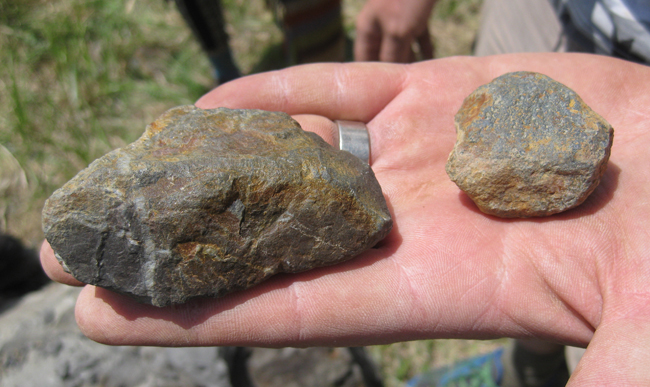
This one was a quartzite:
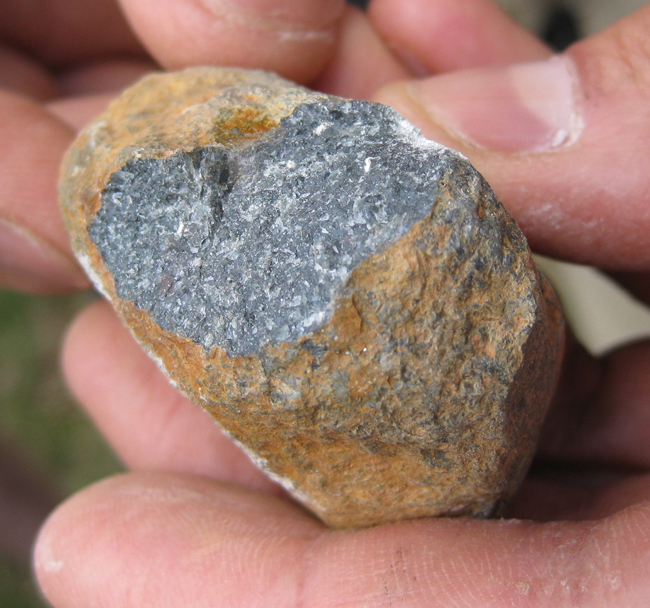
Interestingly, we also found plant fragments in the diamictite, preserved as carbon films. Does this make a glaciogenic interpretation of this rock more or less plausible?
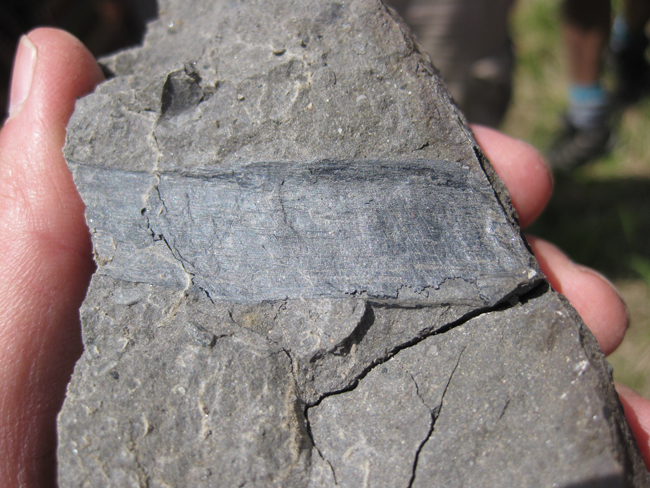
Man oh man, Corridor H is the gift that keeps on giving. What else will we find out there?


 Callan Bentley is Associate Professor of Geology at Piedmont Virginia Community College in Charlottesville, Virginia. He is a Fellow of the Geological Society of America. For his work on this blog, the National Association of Geoscience Teachers recognized him with the James Shea Award. He has also won the Outstanding Faculty Award from the State Council on Higher Education in Virginia, and the Biggs Award for Excellence in Geoscience Teaching from the Geoscience Education Division of the Geological Society of America. In previous years, Callan served as a contributing editor at EARTH magazine, President of the Geological Society of Washington and President the Geo2YC division of NAGT.
Callan Bentley is Associate Professor of Geology at Piedmont Virginia Community College in Charlottesville, Virginia. He is a Fellow of the Geological Society of America. For his work on this blog, the National Association of Geoscience Teachers recognized him with the James Shea Award. He has also won the Outstanding Faculty Award from the State Council on Higher Education in Virginia, and the Biggs Award for Excellence in Geoscience Teaching from the Geoscience Education Division of the Geological Society of America. In previous years, Callan served as a contributing editor at EARTH magazine, President of the Geological Society of Washington and President the Geo2YC division of NAGT.
Very cool! (Pun unintended).
“Does this make a glaciogenic interpretation of this rock more or less plausible?”
I’d say “neutral”. A quick Google search turns up several instances of wood entrained in till deposits (Quaternary). But it’s very thought-provoking. Presumably, if Blakey’s palaeogeographic maps are at all accurate, this would be alpine glaciation, since your area appears to have been somewhere between about 20° and 45° south of the equator in Late Devonian time and it was tropical or nearly so here in the Western Canada Sedimentary Basin, so it begs some questions: How far “down the mountain” did these glaciers reach? Sea level? Any evidence at hand? How high “up the mountain” were plants growing during the Late Devonian? Were these contemporaneous plants, or reworked fossils that had been tectonically uplifted from lowland swamps(?) beyond “normal” (for the time) plant elevations?
Hi Howard,
These were not deposited in a mountainous setting, I don’t think, but reasonably close to sea level. This was Kaskaskia Sea time, and the Valley and Ridge was still a more or less flat-lying stack of accumulating strata. Upsection and down there are marine carbonates.
Great questions you ask – shall I send you a copy of Brezinski’s paper on the topic?
C
(Brezinski’s paper: yes, thank you!)
More thinking and more questions: You mention that this diamictite was exposed low in the section. Are the contacts exposed? Any idea of the thickness? It occurs to me that an alternative interpretation–especially if the unit is relatively thin–could be that it’s a paleosol. I’ve seen a few in core and outcrops (I’m by no means an expert) and some of them look like this: massive, horrible sorting–due to churning by tree roots and critters–very clayey, with floating “outsized clasts”. The entrained organic bits would be very consistent with this, as would a lack of striations. I would expect a paleosol to be relatively much thinner than a till deposit (barring subsequent erosional reduction), and probably smaller “outsized” clasts–no or very few huge boulders. There are probably other characteristics of paleosols that I’m not aware of, that you could look for, e.g. siderite spherules, common in some paleosols, but I don’t know how diagnostic they might be, especially in rocks of this age.
Wow, that is really interesting, and those sure look like diamictites; at least muddy debris flows if not glacial tills. Sure doesn’t look like Hampshire or Cloyd Conglomerate; and I never saw anything like that in the Price Formation, and I don’t think Ron Kreisa did either (Kreisa and Bambach, 1973). OK, way cool!
I’m glad you approve! 🙂
One definite identifier of a diamictite is non parallel striations on the cobbles. Did you see any striations?
I thought I mentioned that in the post – no striations observed.
And I would quibble (politely, of course) with your “definite identifier of a diamictite,” as diamictite is a general term for a rock with this sort of sorting – it does not in and of itself imply a glaciogenic origin. A submarine landslide could produce such a jumble. If what you’re suggesting is that all diamictites are glaciogenic (tillites or the submarine equivalent), then I’d suggest perhaps broadening the definition of the term in your mind to include other depositional systems that make similarly poorly sorted rocks.
http://en.wikipedia.org/wiki/Diamictite
-C.
So maybe that is the answer, Callan. It’s a greywacke deposit as a result of a submarine landslide rather than a diamictite? The plant debris and cobbles could be accounted for from a submarine landslide near a river mouth. The late Devonian is marked by a fluctuation of sea levels and a lower sea level would cause a river mouth to migrate out on the shelf thereby depositing more sediment into areas not used to the extra weight. Or am I misinterpreting what a greywacke is?
I like that – and that’s my default interpretation. BUT: there have been some intriguing suggestions from elsewhere in the depositional system at about this same time that the story may be more complicated (and more interesting) than that alone. I don’t think this rock seals the deal on the glaciogenic interpretation; it merely stirs that spectre in my mind.